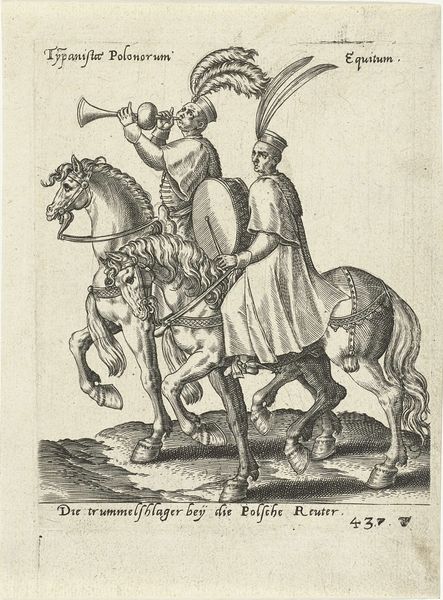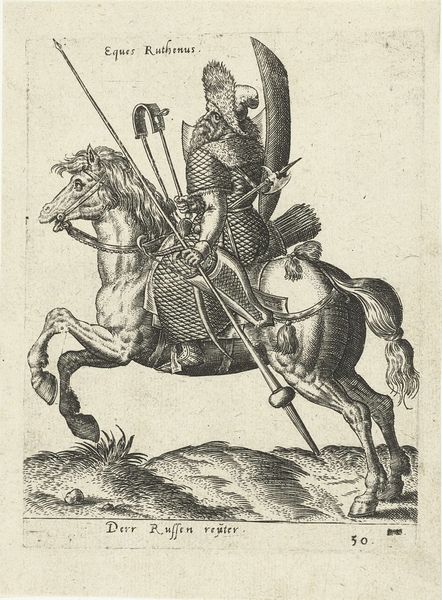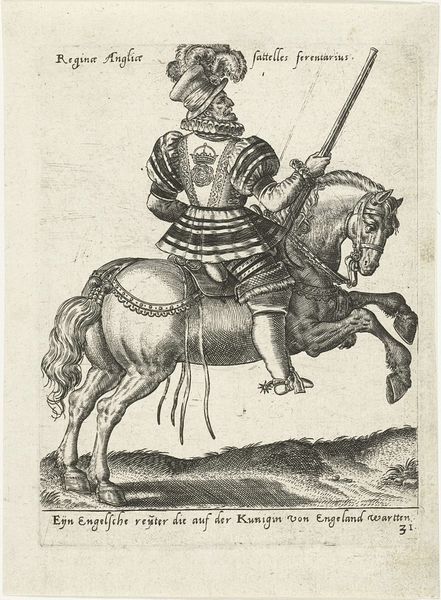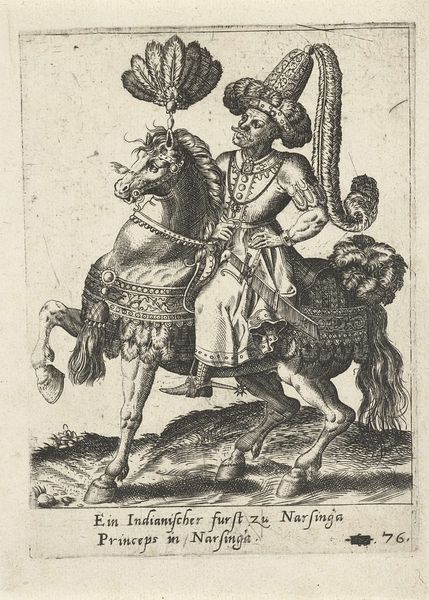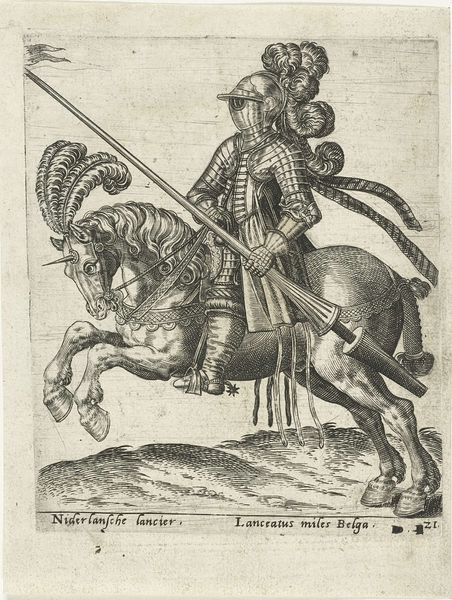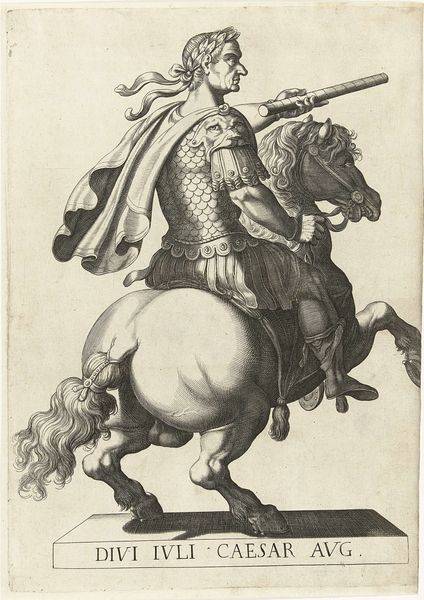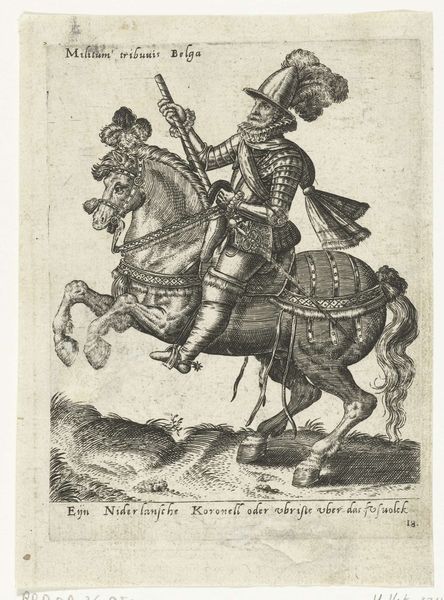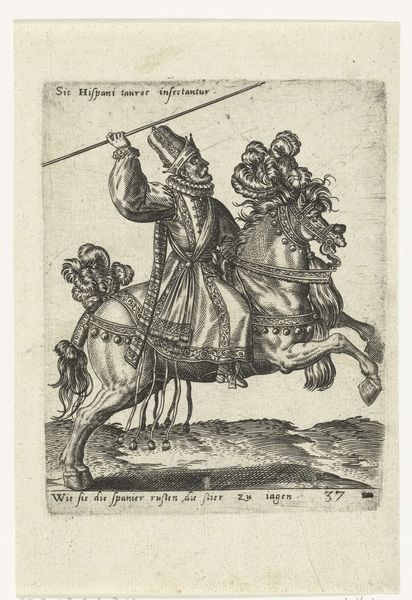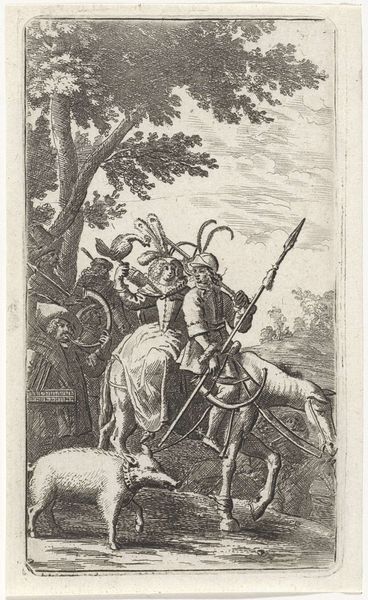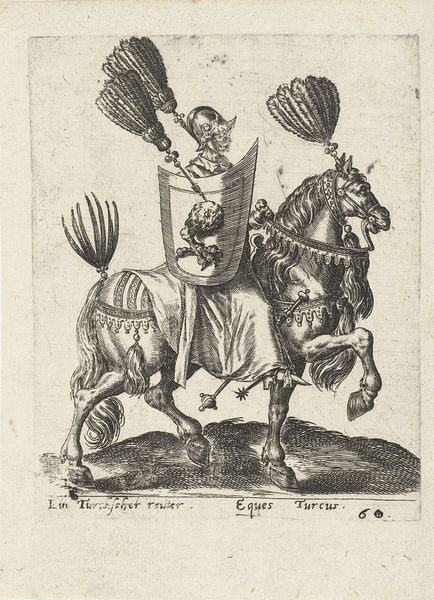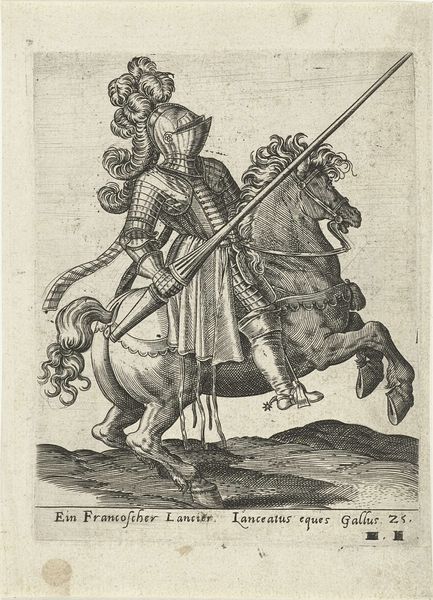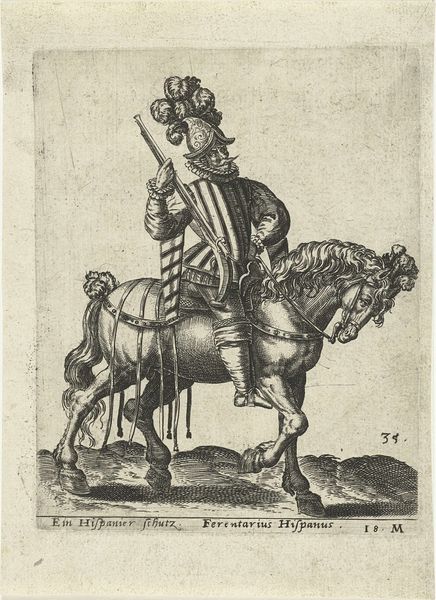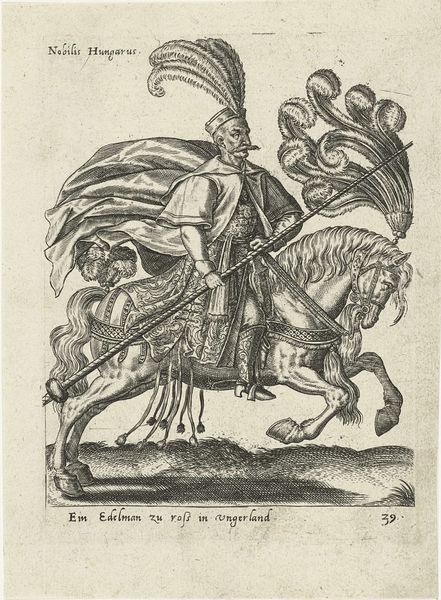
print, engraving
# print
#
old engraving style
#
11_renaissance
#
history-painting
#
northern-renaissance
#
engraving
Dimensions: height 149 mm, width 109 mm
Copyright: Rijks Museum: Open Domain
Curator: Allow me to introduce Abraham de Bruyn's "Moskovitische edelman te paard," an engraving dating back to 1577, currently residing here at the Rijksmuseum. Editor: My immediate reaction? There is such intense detail, such dense visual information. The textures in particular stand out – the chainmail, the horse's musculature. The whole composition is rather captivating, even in this relatively small format. Curator: Absolutely. We need to consider this artwork within its historical context. The late 16th century was a time of intense geopolitical maneuvering. Prints like these often served not just as artistic expressions, but as important cultural documents reflecting and shaping perceptions of foreign powers. It provides an insight into Western Europe’s understanding of Muscovy at the time, complete with the noble rider in all of his gear. Editor: Indeed. The formal language seems quite intentional. The cross-hatching is masterfully executed, creating depth and shadow. Even the way the figure occupies the space - dominant yet almost rigidly posed. I see elements reminiscent of early cartography in how space and details were carefully laid. Curator: Consider, too, the implications of the printing process. Engravings like these were reproducible, allowing images and the ideologies embedded in them to circulate widely. What power does that hold during a time of both geographic and intellectual exploration? Editor: True. Thinking about it, the very choice of depicting a Muscovite noble raises many questions, doesn’t it? How accurate is this depiction? What biases or assumptions might be embedded in de Bruyn's rendering of the figure's dress, arms, and bearing? The very posture evokes something beyond military, perhaps even... intimidation? Curator: It’s not simply an image but an engagement with "the Other", presented at a specific historical juncture. A representation that could potentially feed into larger sociopolitical attitudes toward Muscovy. These visual depictions absolutely served an active role in the politics of identity and power. Editor: A small but powerful reminder of the multifaceted relationship between art, politics and visual communication, then! Thank you, it is incredible how much history and meaning can be condensed in what appears as such a simple engraving. Curator: Indeed! There's so much to unravel within its fine lines.
Comments
No comments
Be the first to comment and join the conversation on the ultimate creative platform.
